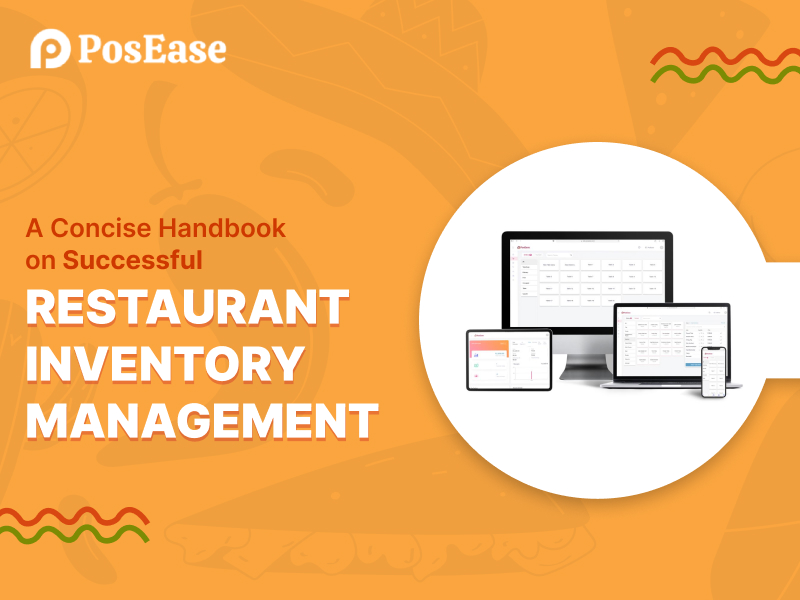A Concise Handbook on Successful Restaurant Inventory Management
Restaurant owners and managers know that handling inventory can be tricky. Inventory management in restaurants should aim to keep costs under control while still providing all of the essential supplies to keep things running smoothly. To do this, a system must exist that tracks what resources are used and how you could optimize operations more effectively.
Restaurant inventory covers all the stuff you use to make your dishes. Managing it helps you keep track of what you use and find ways to run your restaurant more efficiently while saving money.
Properly managing your restaurant’s inventory brings several benefits:
1. Less Food Waste: Research shows that about 10% of raw materials end up as waste before reaching customers. Good inventory management can help you avoid overbuying and cut down on food waste.
2. Lower Food Costs: Purchasing food accounts for a significant portion of your restaurant’s expenses. Effective inventory management can help you minimize food waste and use ingredients in a timely manner, ultimately reducing your food costs.
3. Improved Vendor Relations: Once you get a handle on food waste and keep an eye on expiration dates, you’ll be in a better position to manage your relationships with suppliers.
4. Efficient Resource Usage: All of these practices lead to more efficient and planned use of resources, resulting in cost savings and higher profits for your restaurant.
How do I take restaurant inventory?
To take restaurant inventory, start by counting your items. This is usually done weekly, but adjust the frequency based on your restaurant’s needs.
1. Count Everything: This includes ingredients, cleaning supplies, and dinnerware. It’s a good idea to assign two different staff members to count separately to catch potential errors.
2. List Item Types: Create a list of the items you’re counting, like bread or tomatoes. Your inventory table might have these rows:
Item Type: (e.g., Bread, Tomatoes)
Unit of Measurement: (e.g., Number of bread packets, Kilograms of tomatoes)
Inventory Amount: (e.g., How many bread packets you have?)
Unit Cost: (Price of one unit divided by the number of total units)
Total Cost: (Multiply the unit cost by the amount of that item in your inventory.)
Example: If one bread packet costs INR 20 and you own 10 packets, your total cost would be INR 200. Keeping track of what you own helps you keep track of its worth and value.
Here are five key pointers to enhance your restaurant inventory management:
1. Efficient Organization:
A. Keep your inventory well-organized and easily accessible.
B. Assign designated storage spaces with clear labels.
C. Implement a standardized and sanitized storage system.
D. Streamline the inventory process, possibly using a POS system for easier management.
2. Recipe Standardization:
A. Create standardized recipes for your menu items, specifying ingredients and instructions.
B. Standardization helps you track the precise ingredients needed for each dish.
C. It prevents over-ordering and under-ordering, reducing waste and ensuring item availability.
D. Input your recipes into your POS system to monitor ingredient usage and set alerts for reordering.
3. Consistency in Staff and Scheduling:
A. Establish a consistent schedule for inventory counting, assigning the same staff members.
B. Train your staff in inventory procedures, technical terms, and the use of the POS system.
C. Consistency aids in understanding consumption patterns and minimizes counting errors.
D. Encourage cross-checks among staff members.
4. Raw Material Management:
A. Minimize stocking, especially for perishable items.
B. Implement the First In, First Out (FIFO) method to use older stock first.
C. Track food waste with a designated sheet, noting reasons for waste.
D. Specify the shelf life of each inventory item and explore ways to utilize surplus ingredients.
5. Key inventory terms:
A. Depletion: measure of inventory used over time (in monetary or physical terms)
B. Variance: The difference between the cost of sold products and the cost of used ingredients.
C. Yield: The ratio of products sold compared to ingredients used.
D. Usage: How long an item can be used before repurchasing is required.
E. Par Inventory Sheets: Set levels of items to maintain in the kitchen, guiding order quantities based on existing inventory.
By following these practices and understanding these terms, you can streamline your restaurant inventory management for improved efficiency and cost savings.
If you want to escape the hassle of managing inventory, consider using the PosEase system. It’s tailor-made to handle all your inventory needs with ease!






